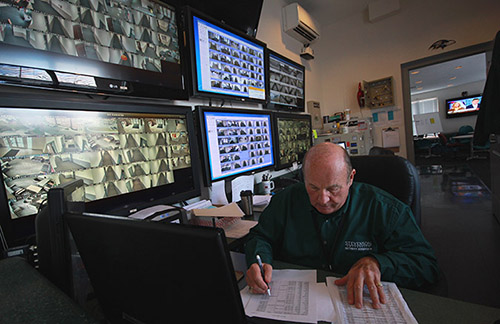Stevenson University is considered a safe college campus with only a few instances of real emergencies in a long period of time. The new head of Campus Security, Greg Cullison, addressed campus security preparedness and the steps that the staff is prepared to take in case of an emergency on campus.

In the case of an active shooter on campus, Cullison said that Stevenson University has a clear and functioning protocol that enables them to lock down all of the buildings on Stevenson’s main campus, Owings Mills, as well as the Greenspring and Owings Mills North campuses.
He added that an SU text alert and an email would go to all students, faculty and staff, keeping the Stevenson community informed of the situation and distributing more information as it becomes available.
In the case of a break-in on campus by an individual who does not attend the university, Cullison said that the initial response would be to first find out if the individual is still on campus and second if the visitor poses a threat. If the individual poses a threat, then security would initiate their lockdown protocol. The Stevenson security team would conduct the initial investigation, but the police would be notified and brought in to conduct an investigation of their own.
To make students feel safer while on campus, Cullison noted that security has access to 24-hour Closed-Circuit Television (CCTV) footage that is constantly being updated. It can easily be reviewed by security and law enforcement officials to find information they need.
Cullison said that members of the Stevenson security team are trained for emergency situations on campus; the team is more than ready and capable at all times to handle almost any situation that arises.
“The Stevenson Security officers are full-time law enforcement officers who train regularly for a variety of incidents. Our retired police officers have extensive professional training for all types of emergencies, including active shooters. Our firefighters and emergency medical technicians, have trained for various emergencies in their respective fields of expertise,” said Cullison.
Faculty and staff members have also voluntarily participated in training for a variety of emergency situations and a copy of the Emergency Procedures Reference Guide are in every dorm, laboratory and meeting room on campus.


























































